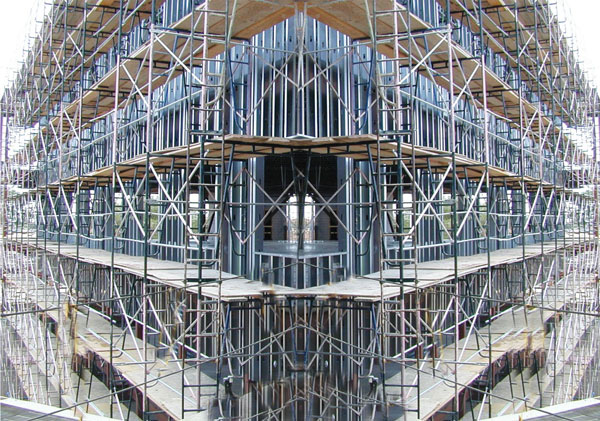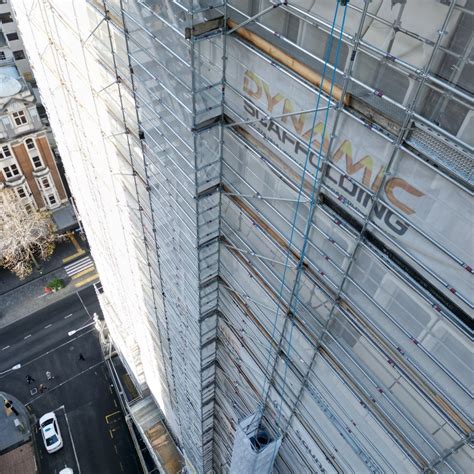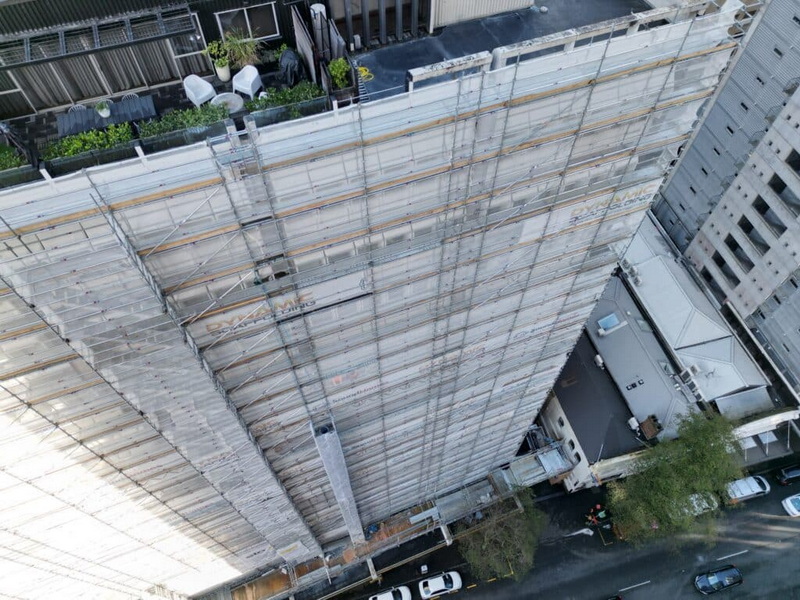Content Menu
● Introduction to Dynamic Scaffolding Systems
● Core Principles of Dynamic Scaffolding
● Key Features of a Dynamic Scaffolding System
>> 1. Real-Time Assessment
>> 2. Adaptive Support
>> 3. Gradual Fading
>> 4. Iterative Refinement
>> 5. Flexibility and Versatility
>> 6. User-Friendly Interface
● Applications of Dynamic Scaffolding Systems
>> 1. Construction
>> 2. Education
>> 3. Software Development
>> 4. Shipbuilding and Maritime
● Challenges and Considerations
● Conclusion
● FAQ
>> 1. What is the main difference between static and dynamic scaffolding?
>> 2. What are some key features of a dynamic scaffolding system?
>> 3. In what fields can dynamic scaffolding systems be applied?
>> 4. What is the role of the Zone of Proximal Development (ZPD) in dynamic scaffolding?
>> 5. What are some challenges associated with dynamic scaffolding systems?
● Citations:
In construction, shipbuilding, education, and even software development, scaffolding serves as a crucial support structure, enabling workers or learners to reach new heights and tackle complex tasks[2][1][3]. However, not all scaffolding is created equal. While traditional, static scaffolding provides a fixed framework, a dynamic scaffolding system offers a more adaptable and responsive approach, tailoring support to the evolving needs of the user[5]. This article explores the key features of a dynamic scaffolding system, highlighting its advantages and applications in various fields.

Introduction to Dynamic Scaffolding Systems
A dynamic scaffolding system is an adaptive support structure that adjusts in real-time to the changing capabilities and requirements of the user. Unlike static scaffolding, which remains constant throughout a project, dynamic scaffolding is designed to be flexible, responsive, and personalized[5]. This approach is rooted in Vygotsky's Zone of Proximal Development (ZPD), which emphasizes the importance of providing support that is just beyond the learner's current capabilities, allowing them to gradually master new skills and concepts[5].
Core Principles of Dynamic Scaffolding
Several core principles underpin the effectiveness of a dynamic scaffolding system:
- Adaptability: The system must be able to adjust its level of support based on the user's performance and progress[5].
- Responsiveness: The system should provide timely and relevant assistance when needed, without being intrusive or overwhelming.
- Personalization: The system should cater to the individual needs and learning styles of the user[5].
- Iterative Support: The system should offer support in a cyclical manner, where the results of one scaffolding process inform the next[1].
- Goal-Oriented: The system should be designed to help the user achieve specific goals or outcomes[1].
Key Features of a Dynamic Scaffolding System
A dynamic scaffolding system possesses several key features that distinguish it from traditional, static scaffolding:
1. Real-Time Assessment
One of the defining features of a dynamic scaffolding system is its ability to assess the user's capabilities in real-time[5]. This assessment can take various forms, depending on the context, including:
- Performance Monitoring: Tracking the user's progress and identifying areas where they are struggling.
- Feedback Analysis: Analyzing the user's responses and providing targeted feedback to guide their learning.
- Adaptive Testing: Adjusting the difficulty of tasks based on the user's performance.
2. Adaptive Support
Based on the real-time assessment, a dynamic scaffolding system provides adaptive support that is tailored to the user's specific needs[5]. This support can include:
- Hints and Guidance: Providing clues or suggestions to help the user overcome challenges.
- Step-by-Step Instructions: Breaking down complex tasks into smaller, more manageable steps.
- Worked Examples: Providing examples of how to solve similar problems.
- Direct Instruction: Offering explicit explanations of concepts or procedures.
3. Gradual Fading
As the user's skills and knowledge improve, a dynamic scaffolding system gradually reduces the level of support provided[1]. This fading process is essential for promoting independent learning and preventing the user from becoming overly reliant on the system. The fading can involve:
- Reducing the Frequency of Hints: Providing fewer hints as the user becomes more proficient.
- Increasing Task Complexity: Gradually increasing the difficulty of tasks to challenge the user.
- Removing Scaffolds Entirely: Eliminating support altogether when the user demonstrates mastery of the skill or concept.
4. Iterative Refinement
A dynamic scaffolding system is not a one-time intervention but rather an iterative process of assessment, support, and fading[1]. The system continuously monitors the user's progress and adjusts its approach accordingly. This iterative refinement ensures that the user receives the right level of support at the right time, maximizing their learning potential.
5. Flexibility and Versatility
A dynamic scaffolding system should be flexible and versatile, capable of adapting to different learning styles, task types, and contexts[7]. This adaptability requires:
- Modular Design: The system should be composed of interchangeable modules that can be easily configured to meet specific needs.
- Customizable Parameters: The system should allow instructors or designers to adjust parameters such as the level of support, the frequency of feedback, and the criteria for fading.
- Integration with Other Tools: The system should be able to integrate with other learning tools and resources, such as online databases, simulations, and collaborative platforms.
6. User-Friendly Interface
A dynamic scaffolding system should have a user-friendly interface that is easy to navigate and understand. This is particularly important in educational settings, where learners may have varying levels of technical expertise. The interface should provide:
- Clear Instructions: Instructions should be clear, concise, and easy to follow.
- Intuitive Controls: Controls should be intuitive and responsive, allowing users to easily interact with the system.

Applications of Dynamic Scaffolding Systems
Dynamic scaffolding systems have a wide range of applications in various fields:
1. Construction
In construction, dynamic scaffolding can be used to provide workers with real-time guidance and support during complex tasks such as steel erection or façade work[2]. The system can use sensors and wearable technology to monitor the worker's movements and provide feedback on their technique, helping them to improve their efficiency and safety.
2. Education
In education, dynamic scaffolding can be used to personalize learning experiences and provide students with targeted support[4][5]. Intelligent tutoring systems (ITS) can assess students' understanding of concepts and provide adaptive instruction, hints, and feedback. The system can also adjust the difficulty of assignments based on the student's performance, ensuring that they are appropriately challenged.
3. Software Development
In software development, dynamic scaffolding can be used to assist programmers in writing code and debugging errors[3]. The system can provide real-time suggestions, code completion, and error checking, helping programmers to write more efficient and bug-free code. Dynamic data scaffolding can also be used to create data-driven applications with minimal coding.
4. Shipbuilding and Maritime
The shipbuilding and maritime industry relies heavily on scaffolding to access ships for repairs, maintenance, and construction[2]. Dynamic scaffolding systems can provide safe and stable platforms for workers to perform tasks at elevated heights and in hard-to-reach areas on massive ships and tankers, adapting to the complex geometries of vessels.
Challenges and Considerations
While dynamic scaffolding systems offer numerous advantages, there are also some challenges and considerations to keep in mind:
- Development Costs: Developing a dynamic scaffolding system can be expensive, requiring expertise in areas such as artificial intelligence, machine learning, and human-computer interaction.
- Data Requirements: Dynamic scaffolding systems often require large amounts of data to train and calibrate their assessment and support mechanisms.
- Ethical Concerns: There are ethical concerns about the use of dynamic scaffolding, particularly in educational settings. It is important to ensure that the system is used in a way that promotes equity and does not discriminate against certain groups of learners.
- Complexity: Dynamic systems can be complex, nonlinear, and sensitive to initial conditions, making them challenging to design and implement[8].
Conclusion
A dynamic scaffolding system offers a powerful approach to providing adaptive and personalized support in various fields, from construction to education to software development. By continuously assessing the user's capabilities and adjusting its level of support accordingly, a dynamic scaffolding system can help users to master new skills, overcome challenges, and achieve their goals. While there are challenges associated with developing and implementing dynamic scaffolding systems, the potential benefits are significant. As technology continues to evolve, we can expect to see even more innovative applications of dynamic scaffolding in the years to come.

FAQ
1. What is the main difference between static and dynamic scaffolding?
Static scaffolding provides a fixed framework, while dynamic scaffolding adjusts in real-time to the changing capabilities and requirements of the user[5].
2. What are some key features of a dynamic scaffolding system?
Key features include real-time assessment, adaptive support, gradual fading, iterative refinement, flexibility, and a user-friendly interface[5][1].
3. In what fields can dynamic scaffolding systems be applied?
Dynamic scaffolding systems can be applied in construction, education, software development, shipbuilding, and other industries[2][4][3].
4. What is the role of the Zone of Proximal Development (ZPD) in dynamic scaffolding?
Dynamic scaffolding is rooted in Vygotsky's Zone of Proximal Development (ZPD), which emphasizes providing support just beyond the learner's current capabilities[5].
5. What are some challenges associated with dynamic scaffolding systems?
Challenges include development costs, data requirements, ethical concerns, and the complexity of dynamic systems.
Citations:
[1] https://www.paulvangeert.nl/publications_files/scaffolding%20van%20geert%20and%20steenbeek.pdf
[2] https://dss.net/scaffold-industrial-applications/
[3] https://learn.microsoft.com/en-us/previous-versions/aspnet/cc488540(v=vs.100)
[4] https://www.researchgate.net/publication/361471221_Applying_Real-Time_Dynamic_Scaffolding_Techniques_during_Tutoring_Sessions_Using_Intelligent_Tutoring_Systems
[5] https://www.ejmste.com/download/an-adaptive-e-learning-system-for-enhancing-learning-performance-based-on-dynamic-scaffolding-theory-5314.pdf
[6] https://pdfs.semanticscholar.org/9453/a8b48a416134295868f89637e23ffe0cbd72.pdf
[7] https://www.avontus.com/blog/six-essential-features-of-the-ideal-scaffolding-design-software/
[8] http://academypublication.com/issues2/tpls/vol10/06/04.pdf






















